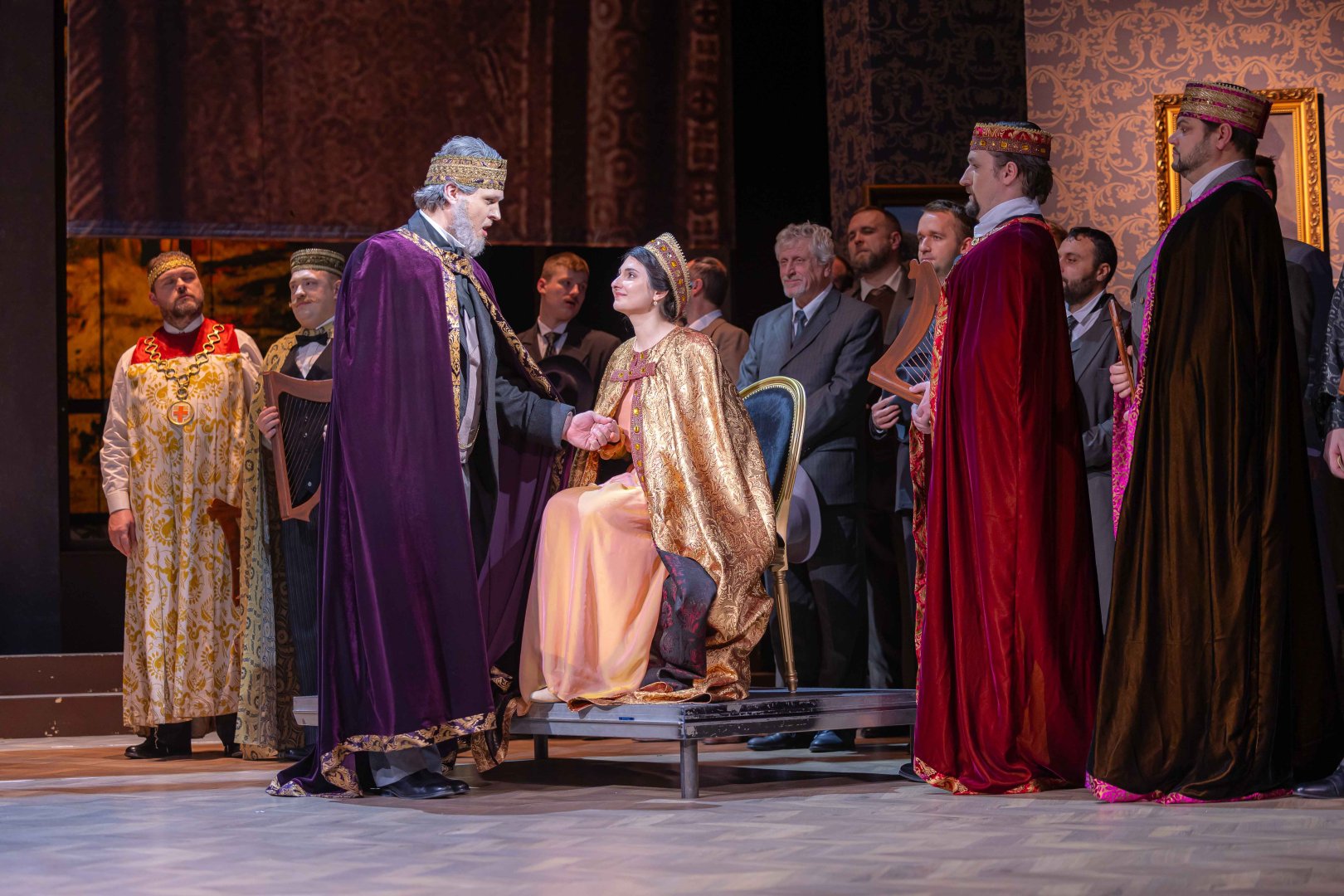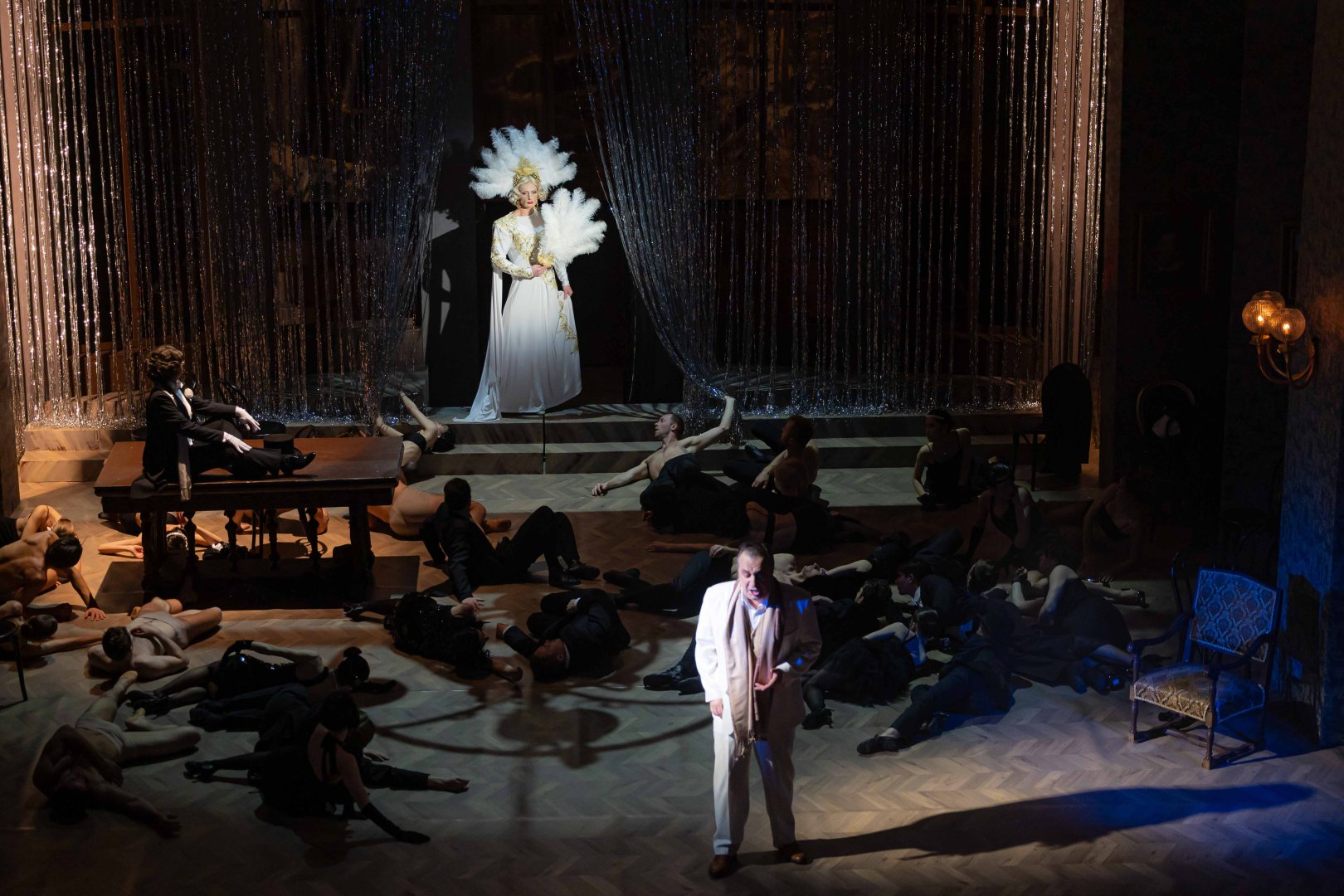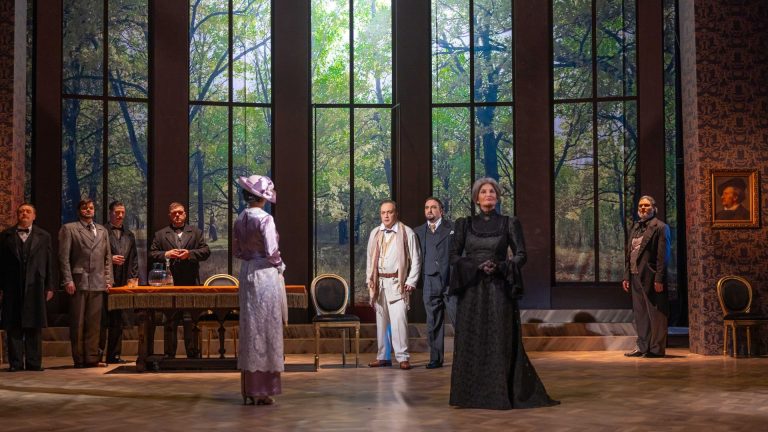In the Middle Ages, the Catholic Church in Europe controlled almost every aspect of life, for better or worse. For those who challenged any of its dictates, life was especially turbulent; furthermore, whatever punitive measures the Church didn’t administer immediately, society would instead. Richard Wagner’s first romantic opera, Tannhäuser (1845), set in the 1400’s in Thuringia, offers a tale of a life severely affected by such constraints from both the Church and society.
On December 1st, the National Theatre Košice, Slovakia, presented a spectacular premiere of a new setting for Tannhäuser, the composer’s first large-scale romantic opera that was anchored in the exploration of the nature of love as defined as sacred or profane, as well as the redemption of love through death. Those philosophical and theoretical ideas were filtered through the lens of the religious zeal of that era.
This particular opera has often been described as a crazy tale of a disturbed man, tortured by religious guilt caused by his dual desires for wanton lust and pure love. The Košice production has provided a credible explanation for this character’s motivations, throwing redemption strategy theories out the window, and creating an alternative interpretation that I believe stands up to scrutiny – or at least makes plausible sense.
The Wagner Circle, an association founded in 1876 around the life and works of Richard Wagner, was an organization that held great power in the burgeoning musical spheres of Europe at that time. The great composer’s son, Siegfried (also a prolific composer and the artistic director of the Bayreuth Festival from 1908-1930), was expunged from the ranks of this powerful circle because of his double life: the scion of one of Germany’s greatest musical geniuses was known to be a not-so-closeted homosexual, a secret that even into the early 20th century brought shame and ridicule to the family.
The design concept team for this production: Stanislav Trnovský, Roland Khern Tóth, and Ondrej Šoth, chose an unorthodox approach to explaining Tannhäuser by providing a parallel side story of Siegfried Wagner’s similarly troubled life. So, in this version, Tannhäuser is simultaneously a 14th century Minnesänger, and at the same time in the body and soul of Siegfried (1869-1930). Likewise, the other roles had their own parallels in Siegfried’s biographical timeline, published alongside the opera’s synopsis in the program book. The production’s blending of time periods with costumes from 1400s to the 1930s kept us in a comparative time warp that helped this narrative succeed.

The Tannhäuser cast included Russian, Georgian, Slovak, Czech and Ukrainian soloists, plus the Chorus and Ballet of the National Theatre Košice, and the Slovak Philharmonic Chorus. Maestro Peter Valentovič led the onstage musical forces with the National Theatre Košice Orchestra in the pit.
In the titular role, tenor Zurab Zurabishvili’s fine acting portrayed a man in personal jeopardy while trying to follow both the Church and society’s rules. One of those rules was to marry and produce a family, which he delayed until he met the young Elizabeth; however, her fate was later sealed in her self-sacrifice to the Virgin Mary. When he wasn’t singing, Zurabishvili’s stage placement was often on the sidelines, observing as an outsider.
That “outsider” position was described by Trnovský in his program statement: “The fateful Tannhäuser production from the Bayreuth summer of 1930 [after which Siegfried died] is the starting point for our production. Siegfried Wagner reflects on his life, relives its turning points in retrospect and thus identifies himself with the title character. Tannhäuser is not only a torn hero, oscillating between the two poles of love, but also a man whose life is full of contradictions… In this, he is similar not only to Siegfried, but also to Richard Wagner, who began as a revolutionary [and who suffered frequent exile between 1849 and 1862] and eventually became a symbol of German-nationalist circles…” Regarding the facts behind the scenes, Dr. Kevin Clarke writes of Siegfried’s hidden life, and the details of the 1930 performance that presaged his death.
As Elizabeth, soprano Utarid Mirzamova used her powerful voice skillfully throughout, although I wanted to witness more palpable enthusiasm in her entrance aria “Dich teure Halle” and more authentic disappointment in her final farewell to life – a long slow aria that needed more energy to be convincing. Bass-baritone Pavol Kubán gave an especially expressive performance as Wolfram, using fine bel canto technique in an excellent portrayal of the singer/poet with ethics and ideals. Outstanding also was Myroslava Havryliuk as Venus, the seducer and ruler of Venusberg, and dressed in a tuxedo as Marlene Dietrich. Her powerful mezzo-soprano traversed this challenging role (it has more high notes than many sopranos often get) with terrific command. Michal Onufer as the Landgraff Hermann excelled, as did Jana Hrubovčáková in the bit-part of the Shepherd.

Tannhäuser – photo: Joseph MarčinskýOne of the most notable contributions was that of scenic designer Juray Fábry, whose oversized scenery in every act almost fooled the audience’s eyes: the tall windows overlooking giant forests, and the horizontally split stage that showed the parallel reality of Venusberg’s libidinous dream-scene and its counterpart — the Victorian drawing room, defied the small confines of this medium-sized proscenium. The large chorus and multitudinous brass players broadcasting from backstage, and sets that gobbled up every aerial inch, managed to give the illusion of a much larger theatre.
The ghost in this production was Cosima Wagner, the wife of Richard (and daughter of Franz Liszt), and mother of Siegfried. Dressed in her generation’s garb, with silver hair artfully coiled atop her head, Cosima was frequently lurking onstage, observing everyone that walked into Wahnfried, the Wagners’ lavish villa. In this mute role, Cosima was elegantly embodied by a stern-looking Beáta Drotárová. As the matriarch of the family and the co-founder of the Bayreuth Festival, Cosima championed its musical traditions and values as the presiding queen among both Liszt’s and Richard Wagner’s social and professional circles.
As a tribute to Siegfried’s neglected contributions to the Wagner family’s musical heritage, the Košice design team, and the musical forces under Maestro Valentovič’s baton, provided a surprise addendum. After Tannhäuser’s grand finale, wherein his death had absolved his forbidden mortal longings, a haunting chorus from Siegfried’s 1914 opera “The Angel of Peace” began, accompanied by a surreal onstage vignette with children with wings on their heads. This moving conclusion, with a beautifully performed unknown musical score by a forgotten composer, felt like a deeply soulful plea for tolerance in an intolerant world.
The National Theatre of Košice’s production of Tannhäuser will be repeated on April 26 and 28, 2024.











